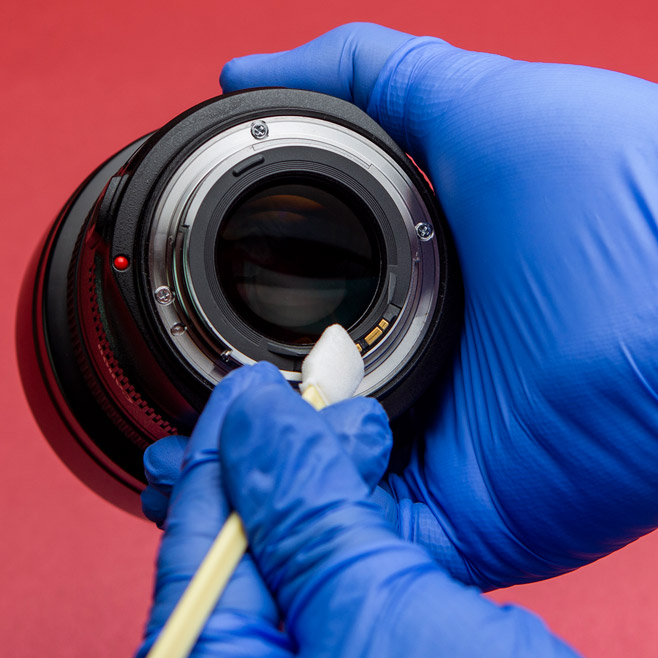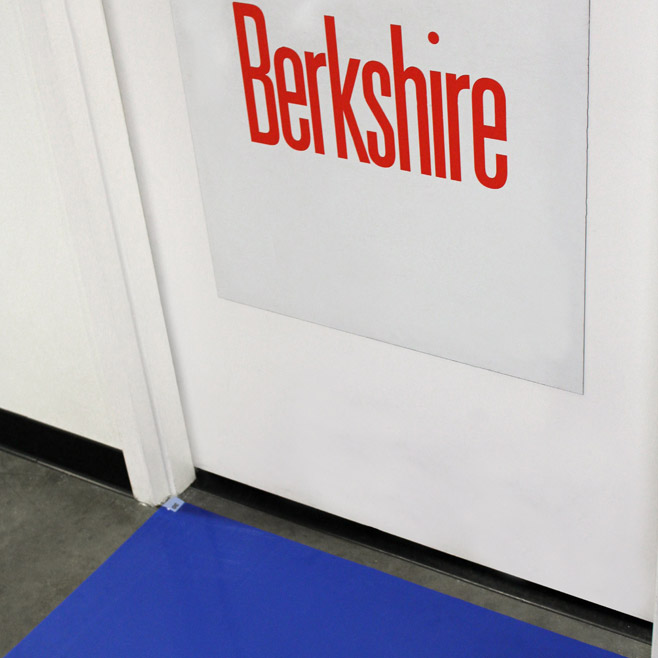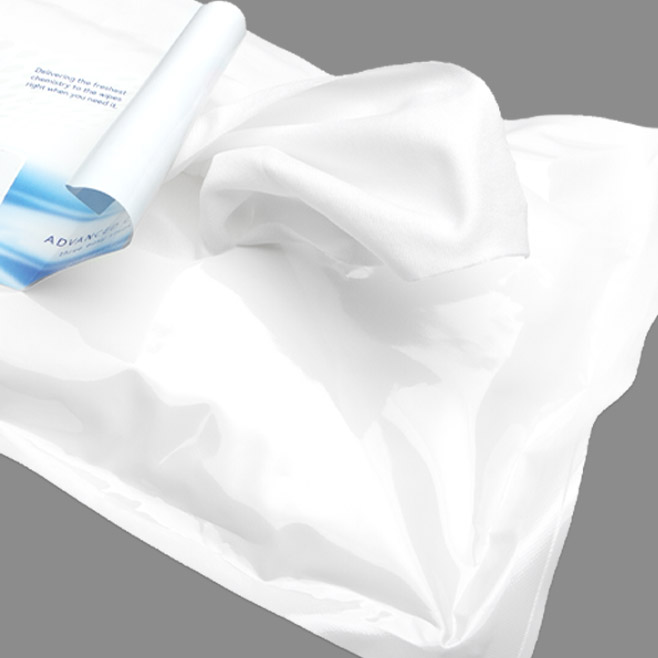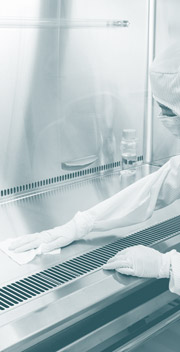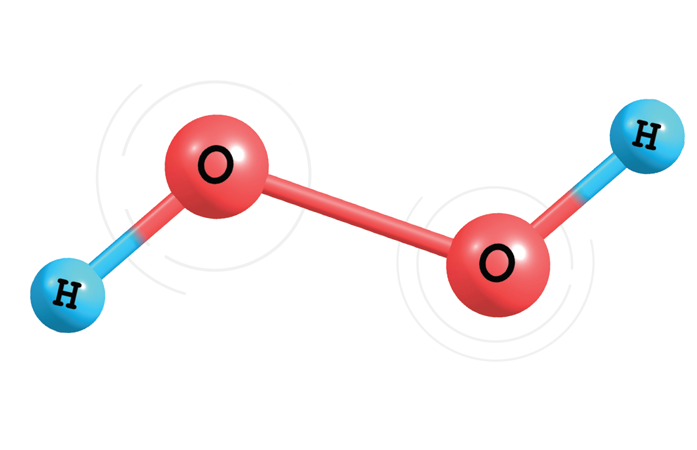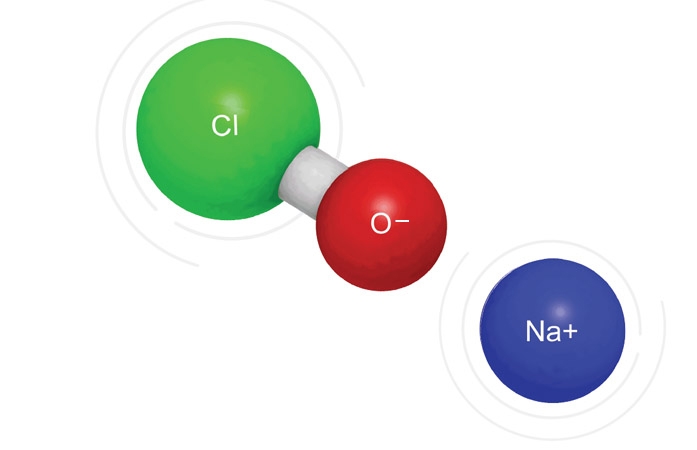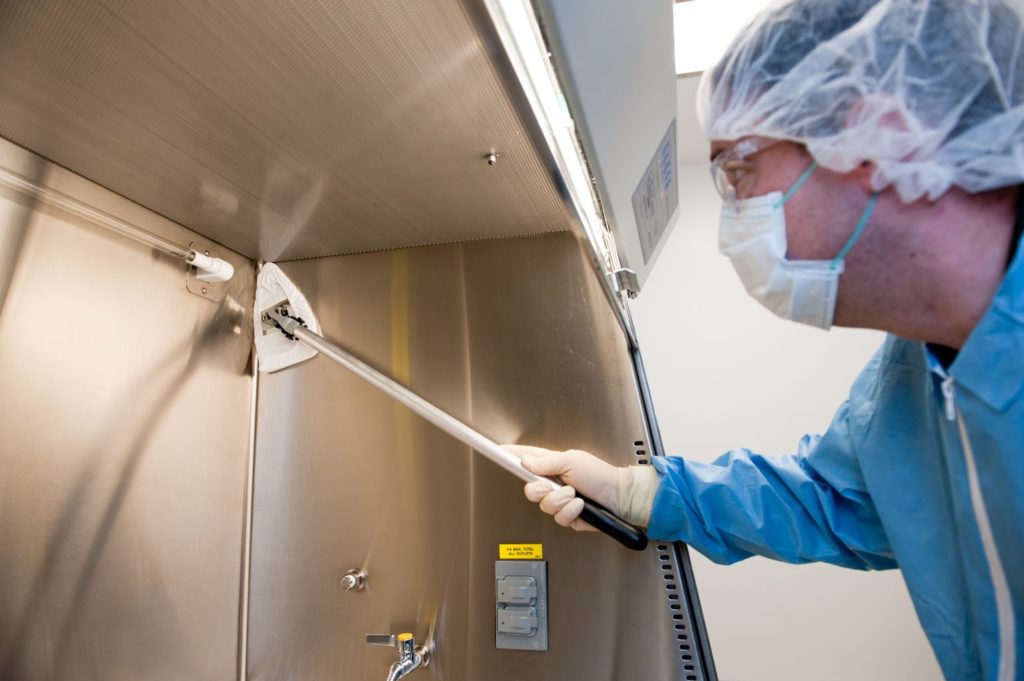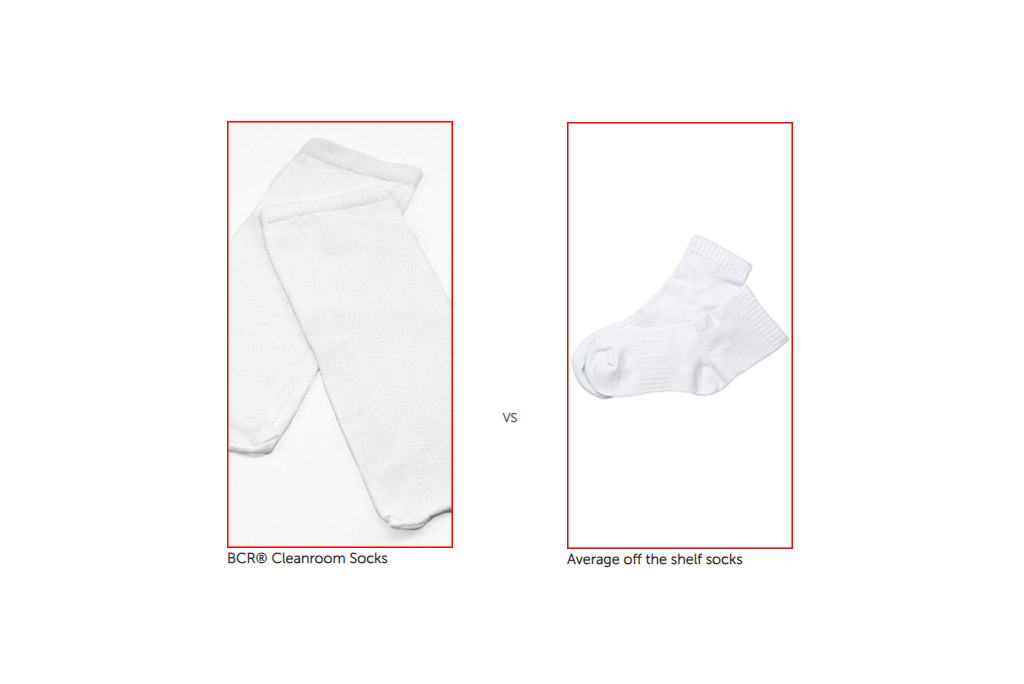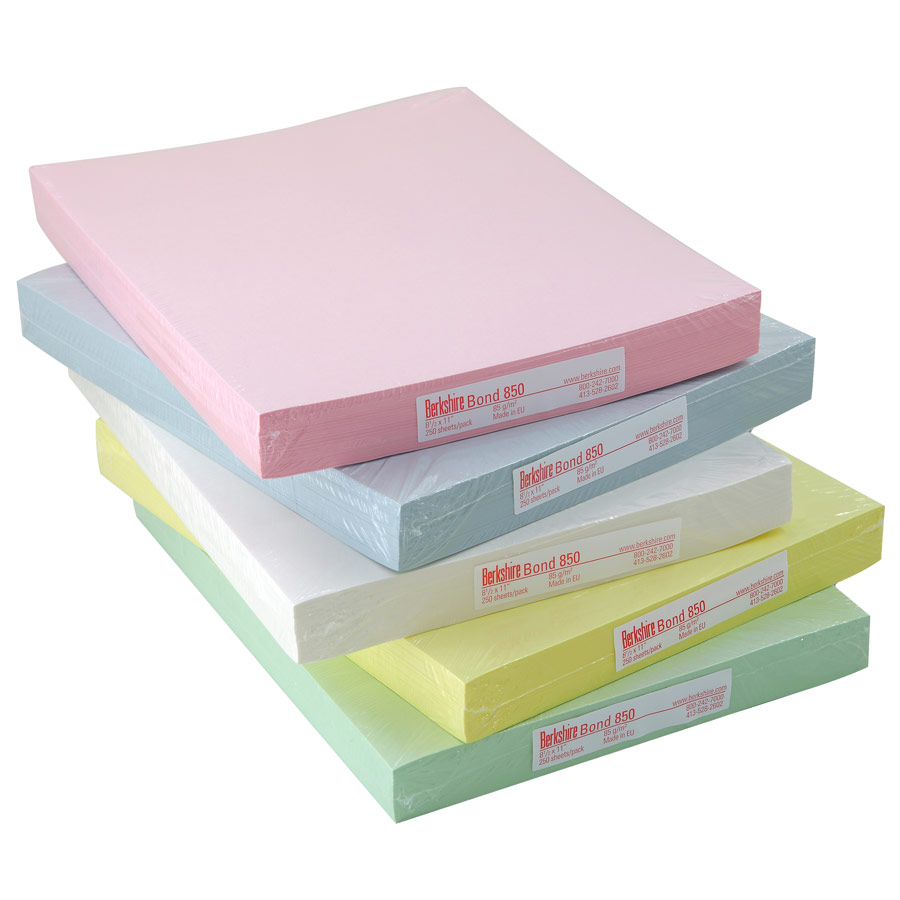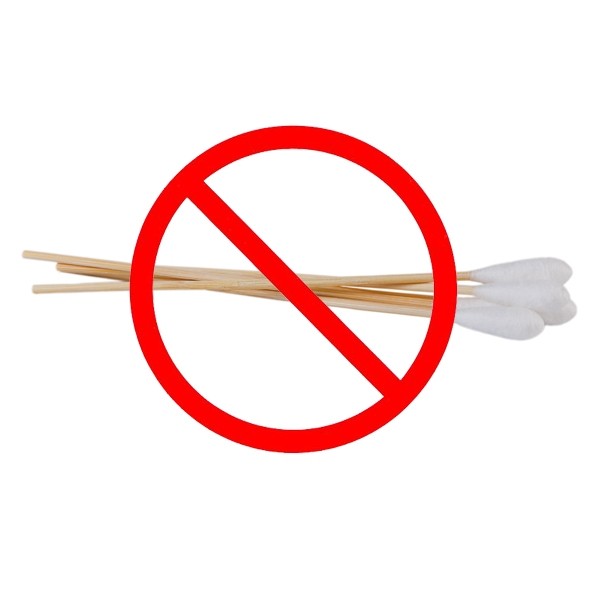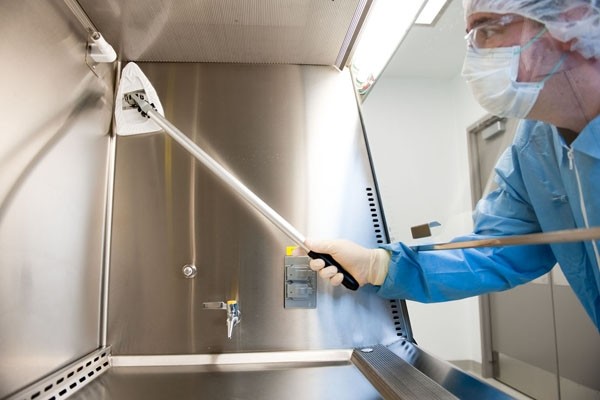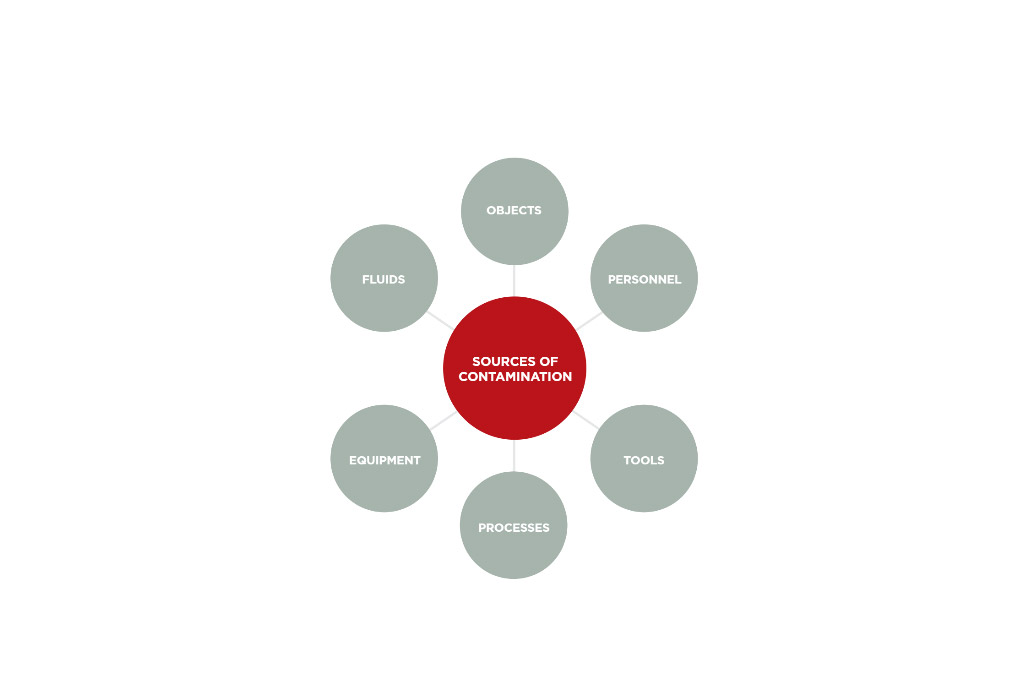Disinfection of Surfaces with Hydrogen Peroxide Of all the contamination control activities in a cleanroom, perhaps the most critical are disinfection procedures. That’s because human health depends on the quality and thoroughness of a surface disinfection wipedown. Many solutions can be considered for surface disinfection, but hydrogen peroxide and sodium hypochlorite (bleach) rate special attention. [Read More…]
Category Archives: Knowledge Base
A previous article in this series discussed disinfection of surfaces with hydrogen peroxide. We turn our attention now to bleach as another very effective treatment agent. Most people understand that ordinary household bleach – a 5.5% solution of sodium hypochlorite (NaOCl) in water – is a strong disinfecting agent. In neutral or slightly acidic solutions the active [Read More…]
The EasyClean® 360 is the most efficient way to clean a laminar flow hood. It’s unique triangular shaped head allows it to clean the difficult tight corners in the hood. The tool is delivered with two handles, a 14” (35cm) and 24” (61cm). There is also another ordering option for a telescoping handle that will extend from 35 [Read More…]
Need assistance with your Choice Mop Handle® and Clamp Assembly. Follow our easy instructions below.
Cleanroom Socks: 22 Particles/Sock Off-The-Shelf Socks: 44,000 Particles/Sock BCR® Cleanroom Socks provide the operator a superior cool and soft feeling for extended wear. Because of the enhanced wicking function, contact discomfort associated with wearing regular cotton or polyester socks is greatly diminished. The odor caused by foot perspiration is reduced as well as sock [Read More…]
BCR® Bond 850 100% wood pulp, synthetic latex binder Helmke Drum (particles/ft3) : 68 Na+ : 100ppm K+ : 1.7ppm Ca++ : 0.56ppm Mg++ : 0.13ppm Cl : 44ppm Standard Copy Paper 100 % wood pulp Helmke Drum (particles/ ft3) : 7200 Na+ : 1500ppm K+ : 12ppm Ca++ : 180ppm Mg++ : 61ppm Cl : 2000ppm 68ppm Vs. 7200ppm! IEST – [Read More…]
Faced with the problem of removing small bits of contamination in the cleanroom, you would probably have to invent the swab if it didn’t already exist. You would soon find that this little “wiper on a stick” would also prove invaluable in cleaning delicate mechanisms, in precision surface cleaning and in removing residues in hard-to-reach [Read More…]
ISO Class 5 – Primary Engineering Controls (PECs) LAFWs – BSCs – CAIs – CACIs At the beginning of the each shift Before each batch No longer that 30 minutes after previous disinfection (during ongoing compounding) After spills When a surface contaminate is known or suspected Clean area after surface sampling (i.e. Contact Rodac Agar [Read More…]
Cleanroom vs Clean Room Many new to the Cleanroom Industry often wonder why sometimes they see variation with the way that cleanroom is spelled, is one word or two words? what is going on here? While “Cleanroom” one word is the most popular terminology across most industries and often drives the highest degree of relevance, [Read More…]
SOURCES OF CLEANROOM CONTAMINATION What Are The Most Common Sources Of Contamination In A Cleanroom? People & Personnel Objects Fluids Tools Equipment Processes What Are The Most Common Types Of Cleanroom Contamination? Skin Particles Fibers Dust Grease Bacteria Viruses Metals Fungi NVRS (Non-volatile Residues) Ions Films DID YOU KNOW? Using Cheap Or Substandard Cleanroom Wipes [Read More…]






